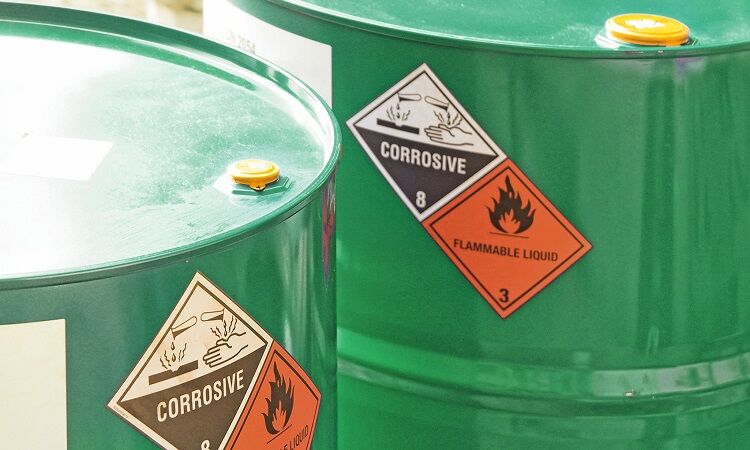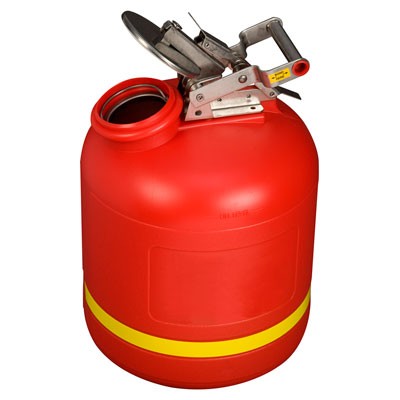Industrial Wastewater Treatment: Advanced Approaches for Effective Monitoring
Industrial Wastewater Treatment: Advanced Approaches for Effective Monitoring
Blog Article
Just How Liquid Waste Disposal Works: A Thorough Summary of Techniques and Technologies Used

Summary of Liquid Waste Kind
The complexity of fluid waste kinds requires a detailed understanding of their attributes and ramifications for disposal. Fluid waste can broadly be classified into a number of types, consisting of industrial, local, agricultural, and unsafe waste. Each category shows distinct residential properties, needing specific monitoring strategies to minimize ecological and health and wellness risks.
Industrial liquid waste stems from making procedures and frequently contains a series of impurities, such as hefty steels, solvents, and natural substances. Municipal fluid waste, mostly comprising wastewater from families and business establishments, has natural matter, nutrients, and microorganisms (industrial wastewater treatment). Agricultural fluid waste, including overflow from farms, might have fertilizers, pesticides, and pet waste, posturing risks to water high quality and ecosystems
Harmful fluid waste is defined by its toxicity, reactivity, or potential to cause harm. This group includes materials like acids, bases, and certain chemicals that necessitate stringent handling and disposal procedures. Recognizing these varied liquid waste types is critical for establishing efficient disposal techniques and making certain compliance with ecological regulations. Correct classification and characterization are essential for executing suitable treatment techniques and lessening the negative influences on public wellness and the setting.
Physical Treatment Methods

Screening is the preliminary step, where bigger fragments and particles are removed from the fluid waste using screens or grates. This process safeguards downstream tools from damages and ensures smoother procedure. Complying with testing, sedimentation makes use of gravitational force to separate solids from fluids. In sedimentation containers, larger bits settle near the bottom, creating a sludge layer, while the cleared up liquid can be additional treated.
Filtration is one more important approach that entails passing the fluid with permeable products, such as sand or membranes, to capture smaller fragments. This step improves the quality of the liquid, making it appropriate for succeeding treatment procedures.

Chemical Treatment Methods
Chemical treatment strategies are essential for effectively taking care of liquid waste, particularly in resolving liquified and colloidal pollutants that physical approaches might not sufficiently remove. These techniques utilize numerous chemical representatives to reduce the effects of, precipitate, or change dangerous materials into less hazardous forms.
One common method is coagulation and flocculation, where chemicals such as alum or ferric chloride are contributed to promote the gathering of put on hold particles. This procedure enhances sedimentation, permitting for less complicated removal of the resulting sludge. Additionally, oxidation processes, utilizing representatives like chlorine or ozone, are used to damage down complex organic compounds and virus, rendering the waste safer for discharge or further treatment.
Neutralization is an additional important technique, which adjusts the pH of acidic or alkaline waste streams to neutral levels, stopping prospective damage to downstream systems and the atmosphere. Additionally, progressed oxidation processes (AOPs) use combinations of oxidants and ultraviolet light to deteriorate relentless toxins, accomplishing a higher degree of treatment effectiveness.
Biological Treatment Processes
Organic treatment procedures play an essential duty in the monitoring of liquid waste by utilizing bacteria to decay organic issue and lower pollutant degrees. These procedures can be generally classified right into anaerobic and cardio therapies, each utilizing specific microbial communities to accomplish effective waste destruction.
Cardiovascular treatment involves making use of oxygen to facilitate the breakdown of organic materials by microorganisms. This procedure is frequently carried out in turned on sludge systems, where oygenation containers provide a conducive environment for microbial growth, bring about the oxidation of organic contaminants. The resultant biomass can be divided from dealt with effluent via sedimentation.
On the other hand, anaerobic therapy happens in the absence of oxygen, counting on different bacteria to break down organic matter. This technique is especially useful for high-strength waste, as it creates biogas, a sustainable power resource, while minimizing sludge production. Technologies such as anaerobic digesters are often employed in community and commercial applications.
Both cardiovascular and anaerobic biological treatments not just reduce the environmental effect of liquid waste however additionally assist in source recovery, making them necessary parts of sustainable waste management strategies. Their versatility, efficiency, and performance sustain their widespread implementation throughout various fields.
Emerging Technologies in Disposal
Ingenious techniques to liquid waste disposal are quickly developing, driven by advancements internet in innovation and a raising focus on sustainability. Amongst these emerging innovations, membrane bioreactors (MBRs) have gained traction for their capacity to incorporate anchor biological therapy with membrane filtration, causing top quality effluent that can be reused in different applications. MBRs allow smaller sized footprints and a lot more reliable operations contrasted to standard systems.
One more encouraging advancement is the use of anaerobic food digestion incorporated with nutrient recuperation innovations, which not only treats liquid waste but likewise produces biogas and recovers valuable nutrients like nitrogen and phosphorus. This double benefit improves resource performance and minimizes environmental impact.
In addition, advanced oxidation procedures (AOPs) are being adopted for the destruction of complicated natural toxins. These approaches use powerful oxidants and stimulants to damage down contaminants at the molecular level, providing a very effective remedy for tough waste streams.
Furthermore, the combination of artificial intelligence and artificial intelligence in waste management systems is maximizing operational effectiveness and anticipating maintenance, bring about decreased costs and enhanced ecological conformity. These innovations reflect a substantial change in the direction of even more effective and sustainable fluid waste disposal practices.
Final Thought
In verdict, effective liquid click here to find out more waste disposal requires an extensive understanding of different strategies and innovations. By continuously advancing these methodologies, it comes to be possible to deal with the growing difficulties linked with liquid waste, eventually adding to environmental defense and source healing.
Fluid waste disposal is an important facet of ecological administration, needing a thorough understanding of numerous techniques and modern technologies tailored to different waste types. Fluid waste can broadly be categorized into numerous kinds, including commercial, municipal, farming, and hazardous waste. Agricultural fluid waste, including overflow from farms, may have fertilizers, pesticides, and pet waste, positioning threats to water top quality and ecosystems.
Various physical therapy methods play a critical function in handling fluid waste effectively - industrial wastewater treatment.In final thought, reliable fluid waste disposal requires a detailed understanding of different strategies and modern technologies
Report this page